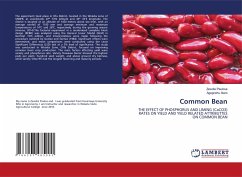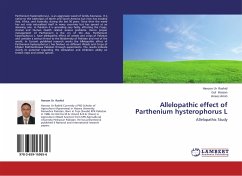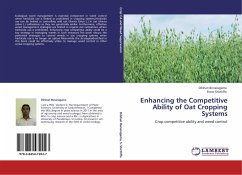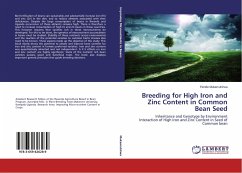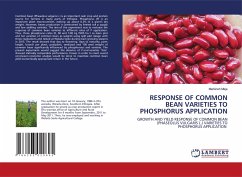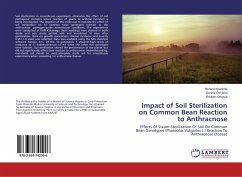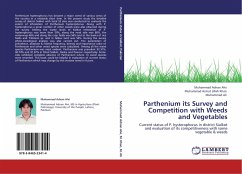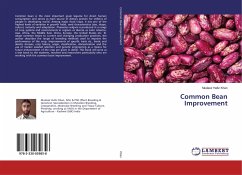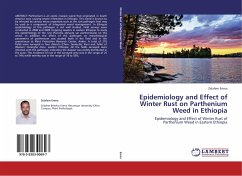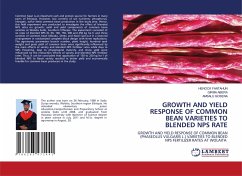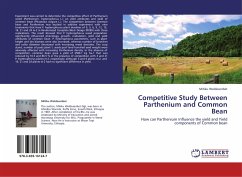
Competitive Study Between Parthenium and Common Bean
How can Parthenium Influence the yield and Yield components of Common bean
Versandkostenfrei!
Versandfertig in 6-10 Tagen
32,99 €
inkl. MwSt.

PAYBACK Punkte
16 °P sammeln!
Experiment was carried to determine the competitive effect of Parthenium weed (Parthenium. hysterophorus L.) on yield attributes and yield of common bean (Phaseolus vulgare L.). The competition between common bean and Parthenium was studied in additive experiment with nine treatments that have P. hysterophorus plant densities of 0, 3, 6, 9, 12, 15, 18, 21 and 24 m-2 in Randomized Complete Block Design (RCBD) with three replications. The result showed that P. hysterophorus weed population significantly influenced phenology, growth, nodulation, yield and yield attributes of common bean. P. hyste...
Experiment was carried to determine the competitive effect of Parthenium weed (Parthenium. hysterophorus L.) on yield attributes and yield of common bean (Phaseolus vulgare L.). The competition between common bean and Parthenium was studied in additive experiment with nine treatments that have P. hysterophorus plant densities of 0, 3, 6, 9, 12, 15, 18, 21 and 24 m-2 in Randomized Complete Block Design (RCBD) with three replications. The result showed that P. hysterophorus weed population significantly influenced phenology, growth, nodulation, yield and yield attributes of common bean. P. hysterophorus parameters, such as plant height and dry biomass were also increased, whereas number of branches and collar diameter decreased with increasing weed densities. The crop stand, number of pods plant-1, seeds pod-1and hundred seed weight were adversely affected with increasing Parthenium density. In the absence of competition, common bean gave a yield of 2599.1 kg ha-1 that was reduced by 16.5 and 86.5 % in the presence of competition with 3 and 21 P. hysterophorus plants m-2, respectively, although 3 and 6 plants m-2, and 18, 21 and 24 plants m-2 had no significant difference in yield.



